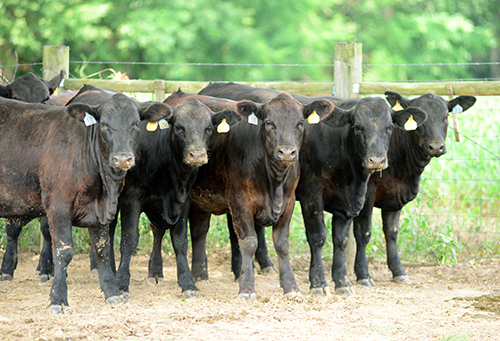Finishing Beef Cattle
Aug 15, 2022

Whether selecting a few animals to fill up the freezer for your family or selling beef direct to consumers, finishing and prepping calves for slaughter is a trend that continues to grow. With the goal of producing a carcass that has an ample yield of tender cuts and is juicy to the pallet, feeding and management are essential to meeting expectations. Finishing rations are all about high energy, especially compared to diets for cows. It is energy that allows for fat deposition to aid in juiciness, and concentrating enough energy is the intent for finishing rations. However, ruminant animals must be closely monitored to prevent health issues, such as reduced ruminal pH and acidosis rising from high grain rations. Note the management tips below:
· Obtain slaughter date – it is important to match the animal’s genetics/maturity to know how long a feeding period will be required. Later maturing genotypes typically require longer finishing periods versus earlier maturing, English breeds. This will dictate the level of performance that must be realized to prevent either under or over-finished animals. Many commercial locker plants schedule slaughter dates as early as a year in advance.
· Identify what feedstuffs will be available – fewer days on feed generally require more grain than forage.
· Providing dry, well-drained pens protected from the wind will improve performance and animal comfort. Excess mud will significantly reduce performance.
· Water availability is very important – according to data from Oklahoma State University, 1,000 lb. steers can consume 14-20 gallons of water per day (depending on temperature).
· Acclimate cattle to ration change – most growing diets are higher forage/fiber rations with lower amounts of starch (grain). Incorporating higher grains into the diet should be gradual over approximately 12-15 days.
· Acclimated animals should be offered a finishing ration for ad libitum consumption.
· Observing feed bunks are important for determining feed consumption adequacy. Cattle should be fed to approximately 2% overage. If cattle are out of feed for more than 2 hours within a 24-hour period, increase feed volume by one dry matter lb. per day.
· Cattle deposit fat in specific areas. Routinely observe cattle for signs of fat deposition, especially as the slaughter date approaches.
Finishing cattle is not an overly burdensome operation. However, providing the optimal ration can depend upon several factors. As the animal grows, overall protein requirement decreases while energy concentration becomes significant. This is due to fat becoming a larger portion of weight gain and carcass composition. Overall average daily gain (ADG) is affected by genetics and animal health.
Generally speaking, the finishing period will add 450 lbs. of body weight during a 125-day period. Typically, the animal will need to average approximately 3.6 lbs. per day to meet the objective. Under these conditions, the animal will need the energy concentration of the grain mix to be at least 0.585 Mcal NEg (dry matter basis).
Your local Co-op has feeds specifically for this phase of beef production along with trained personnel to help formulate rations to meet the needs of the finishing program. For more content like this, check out the latest issue of The Cooperator.